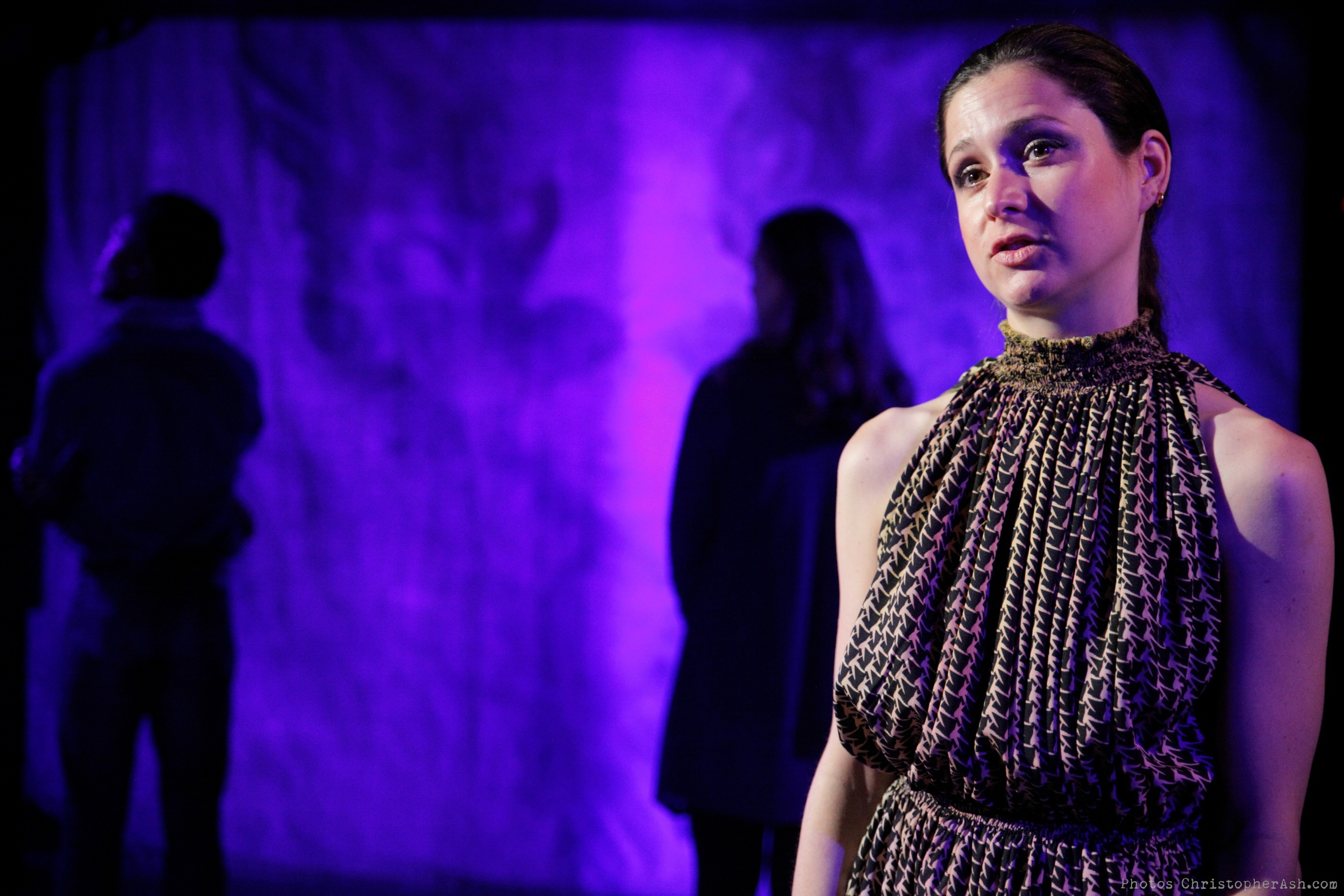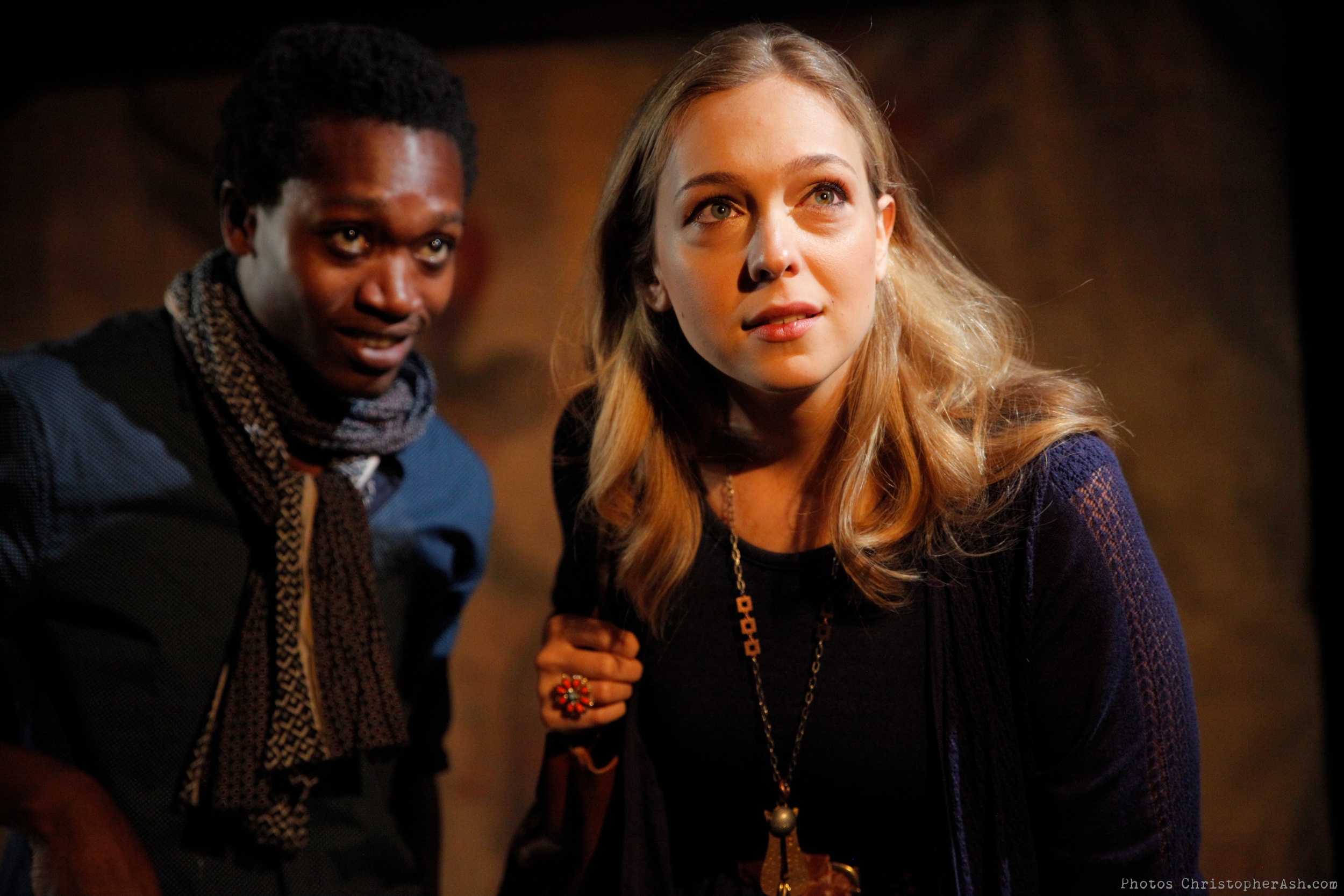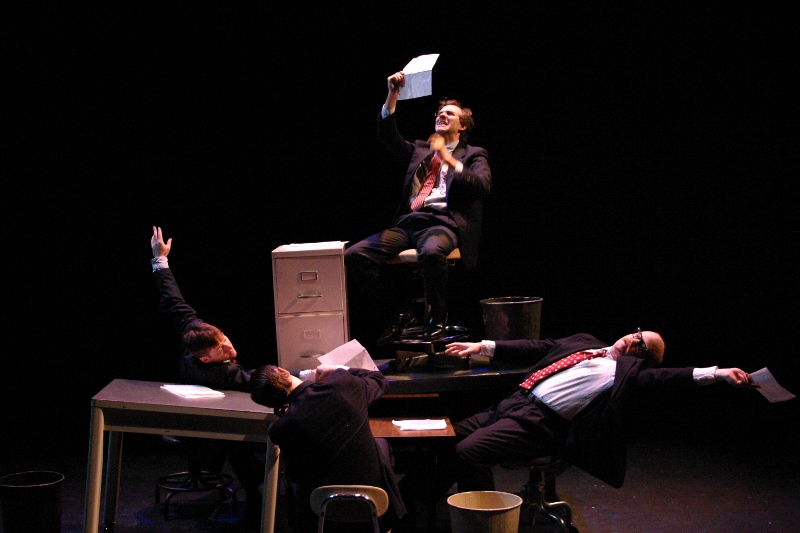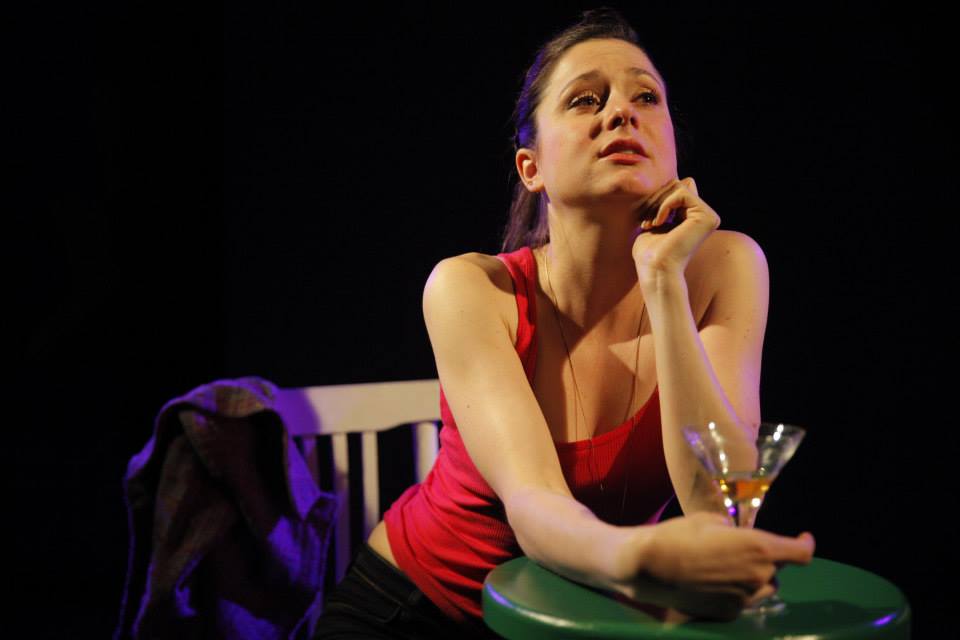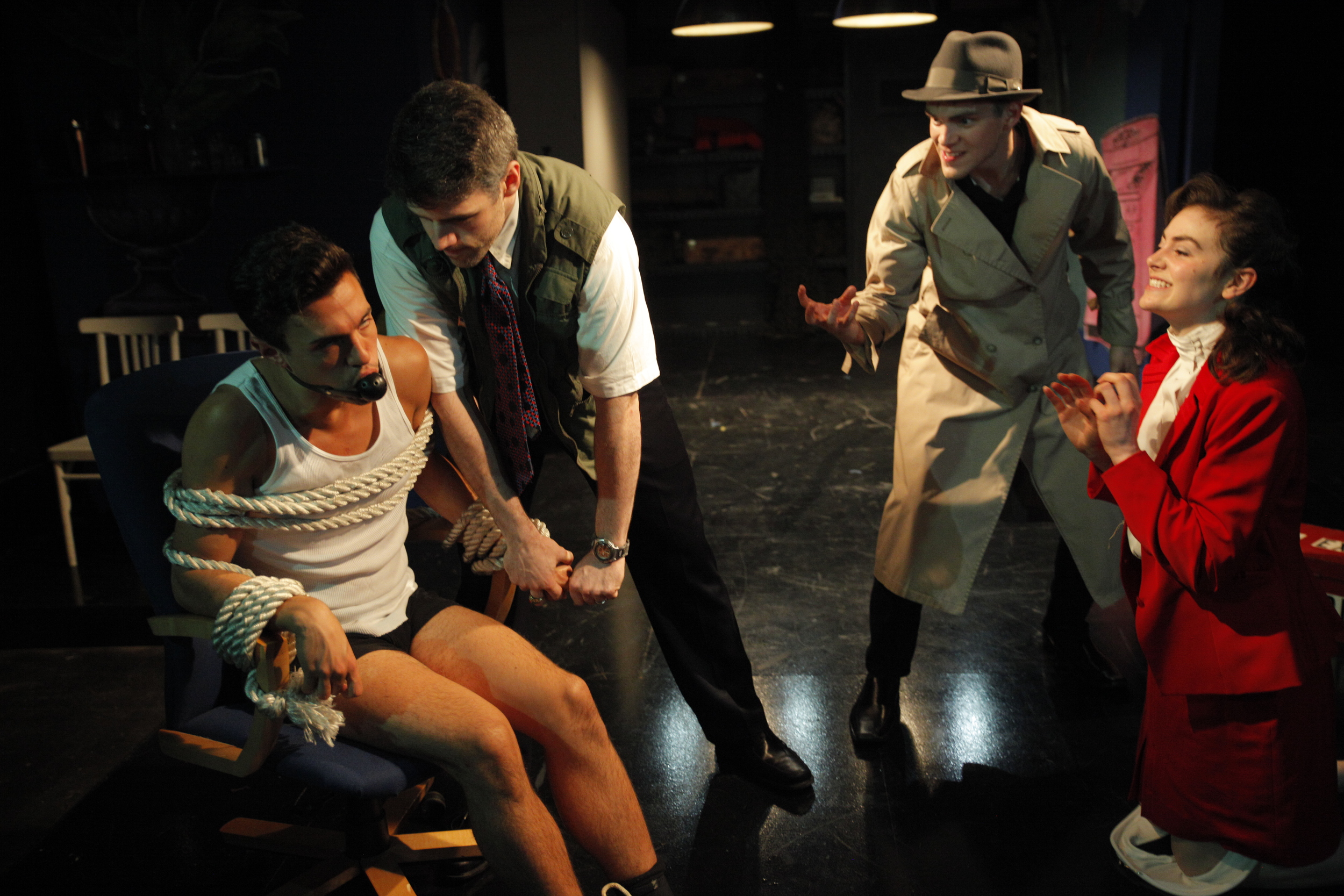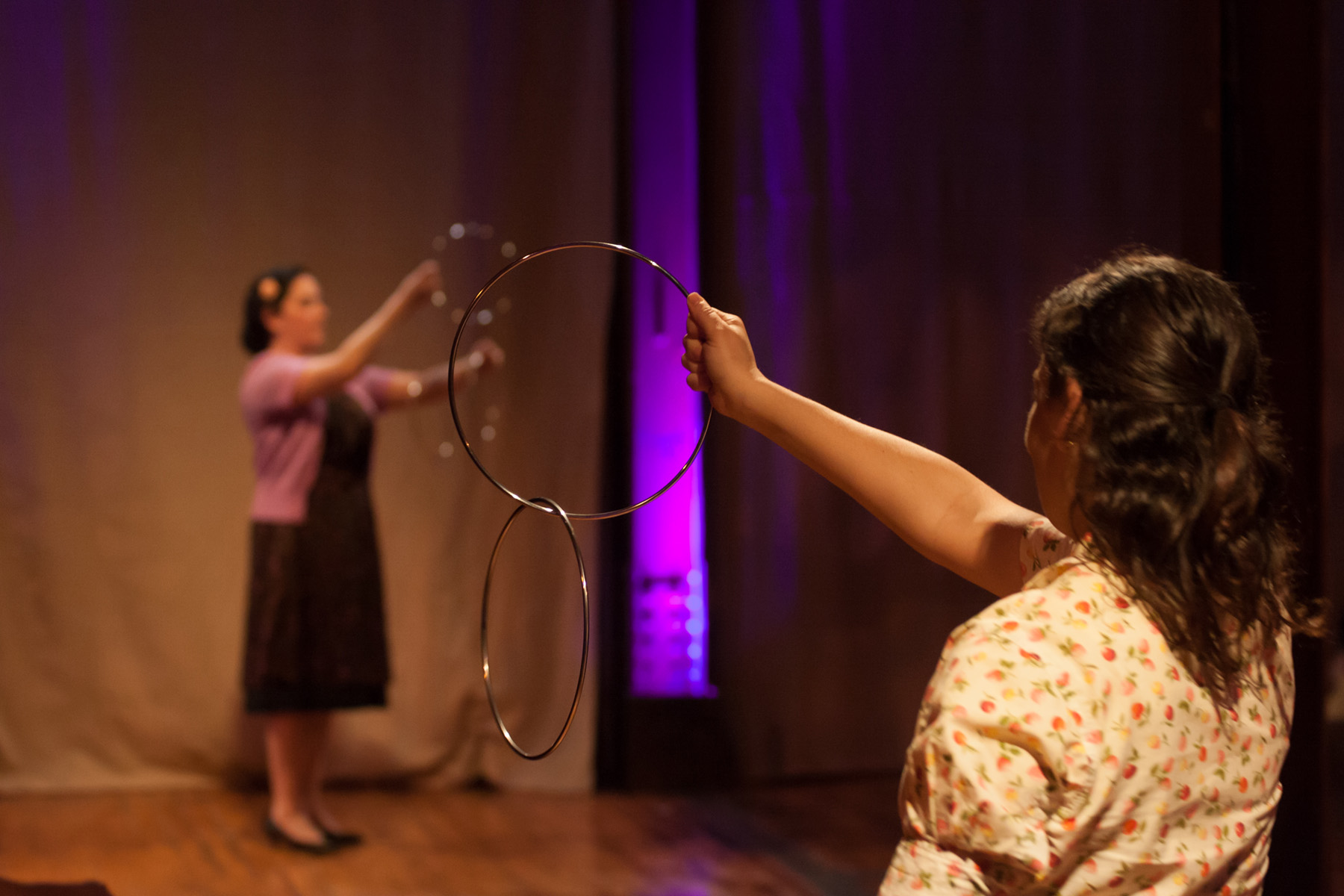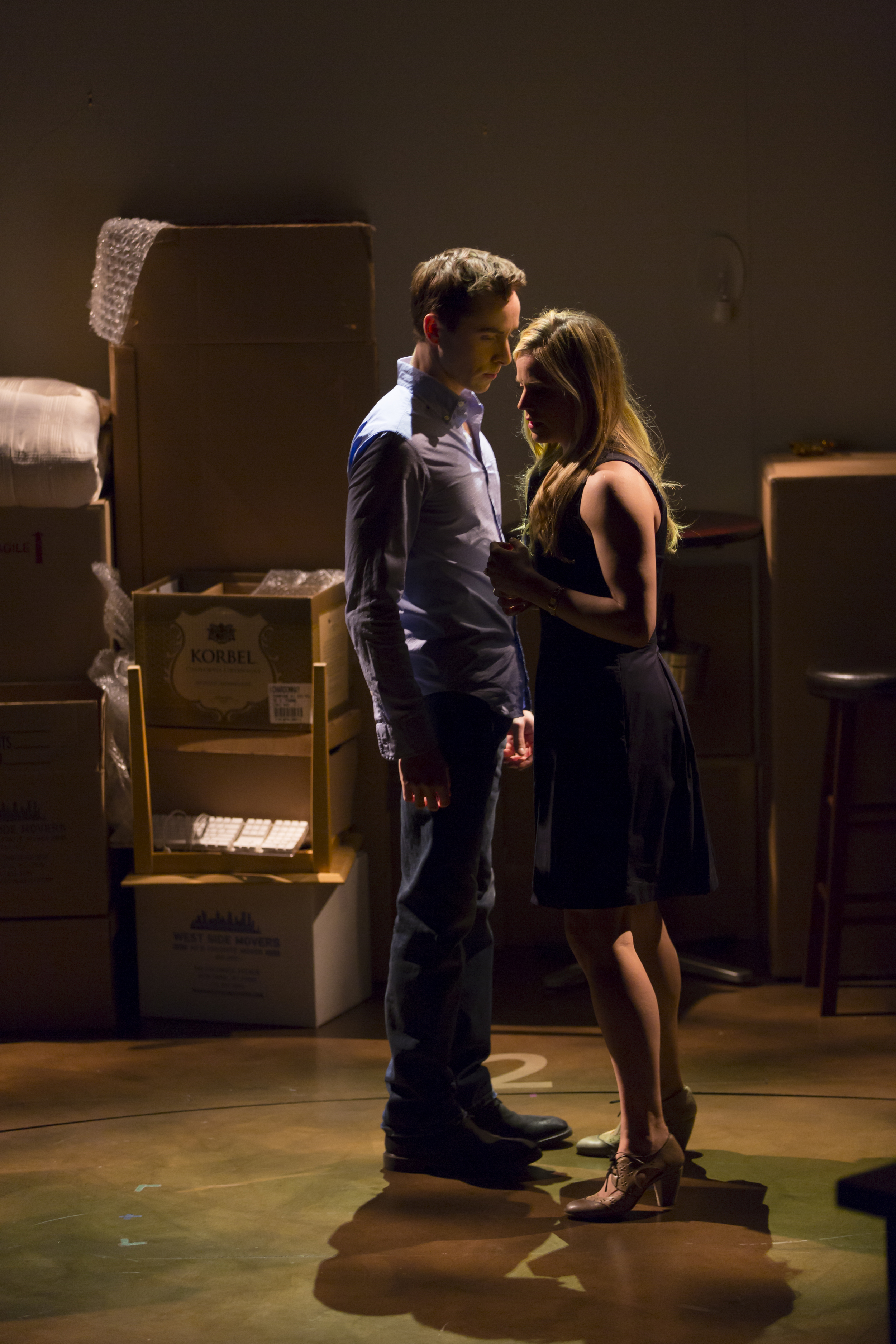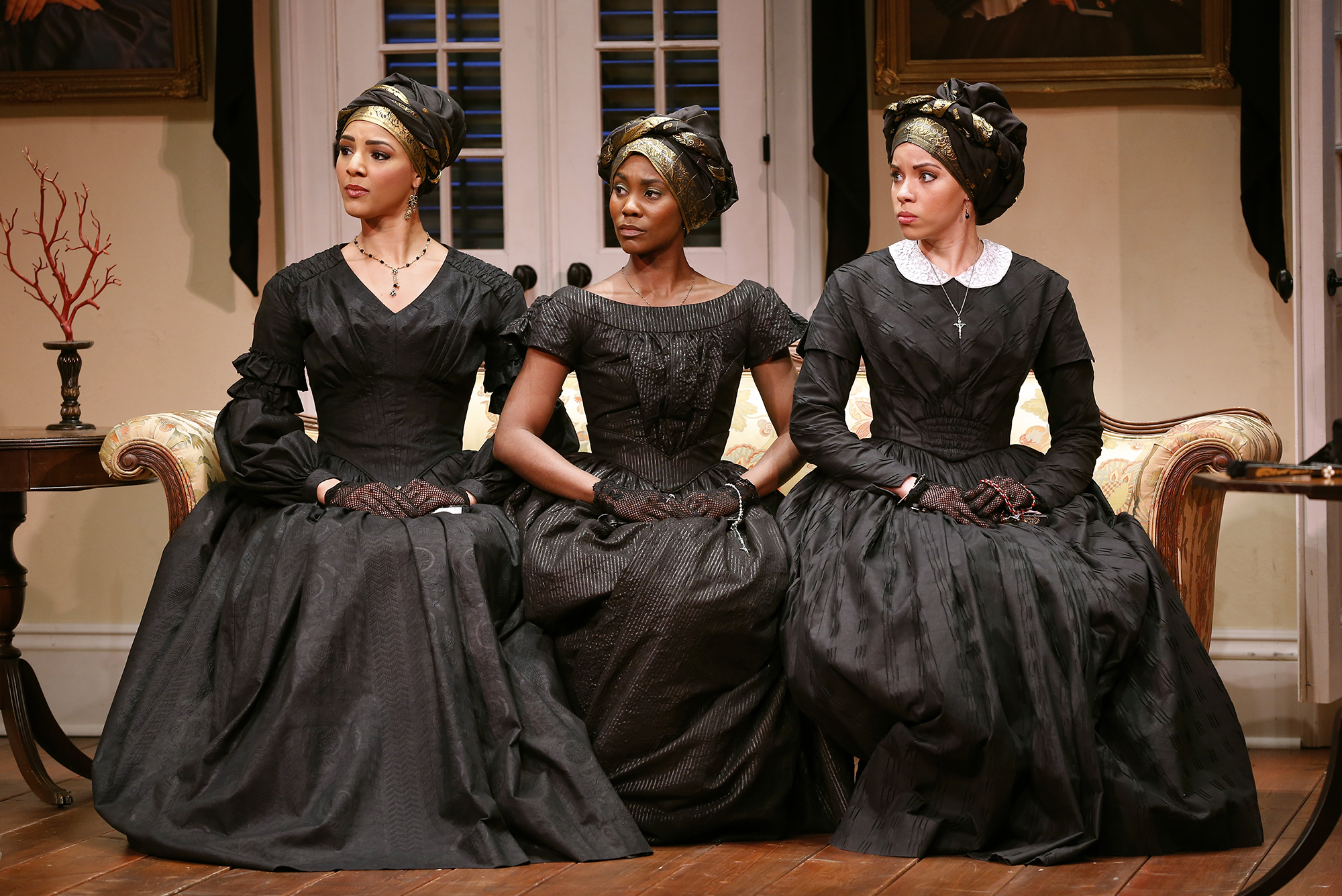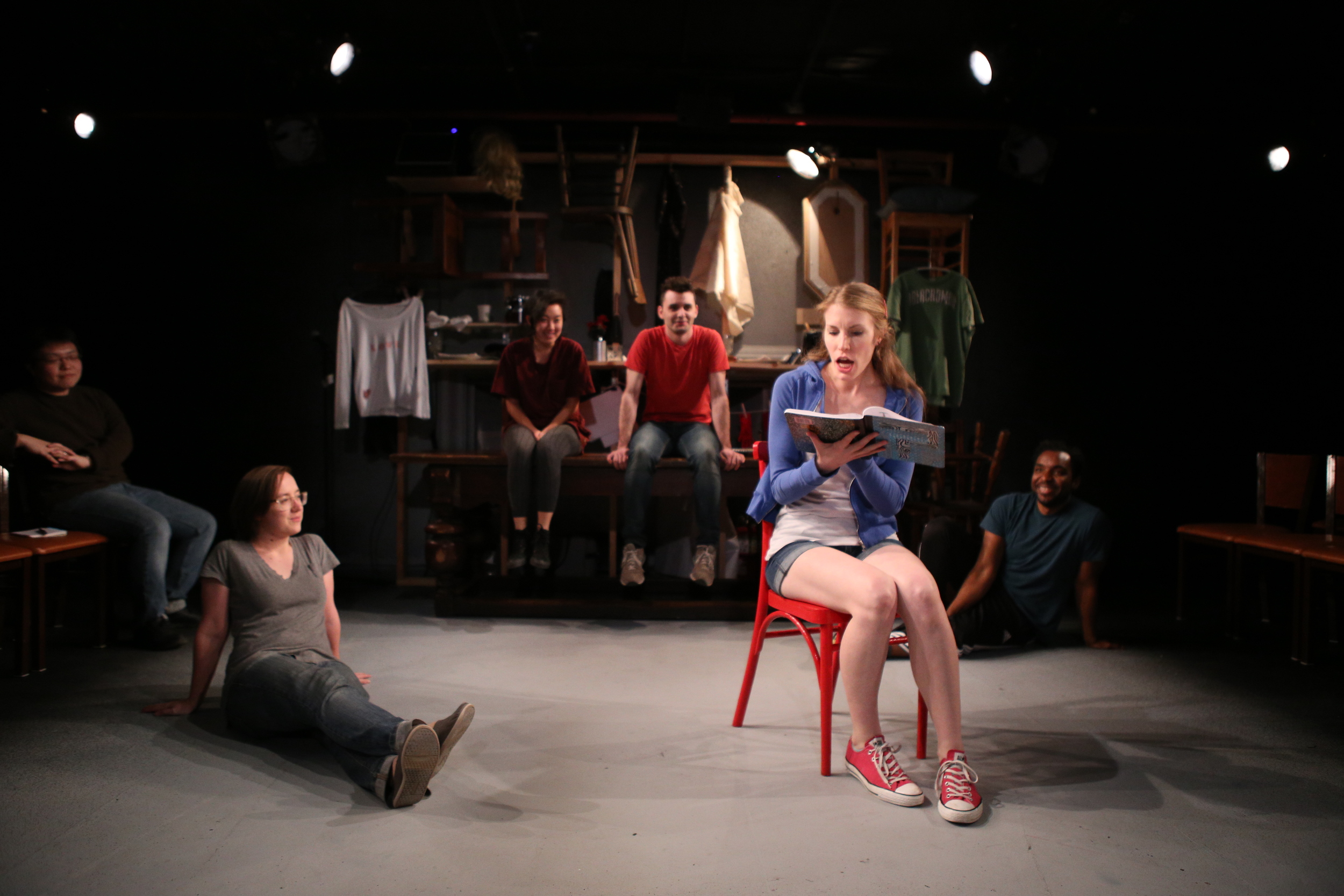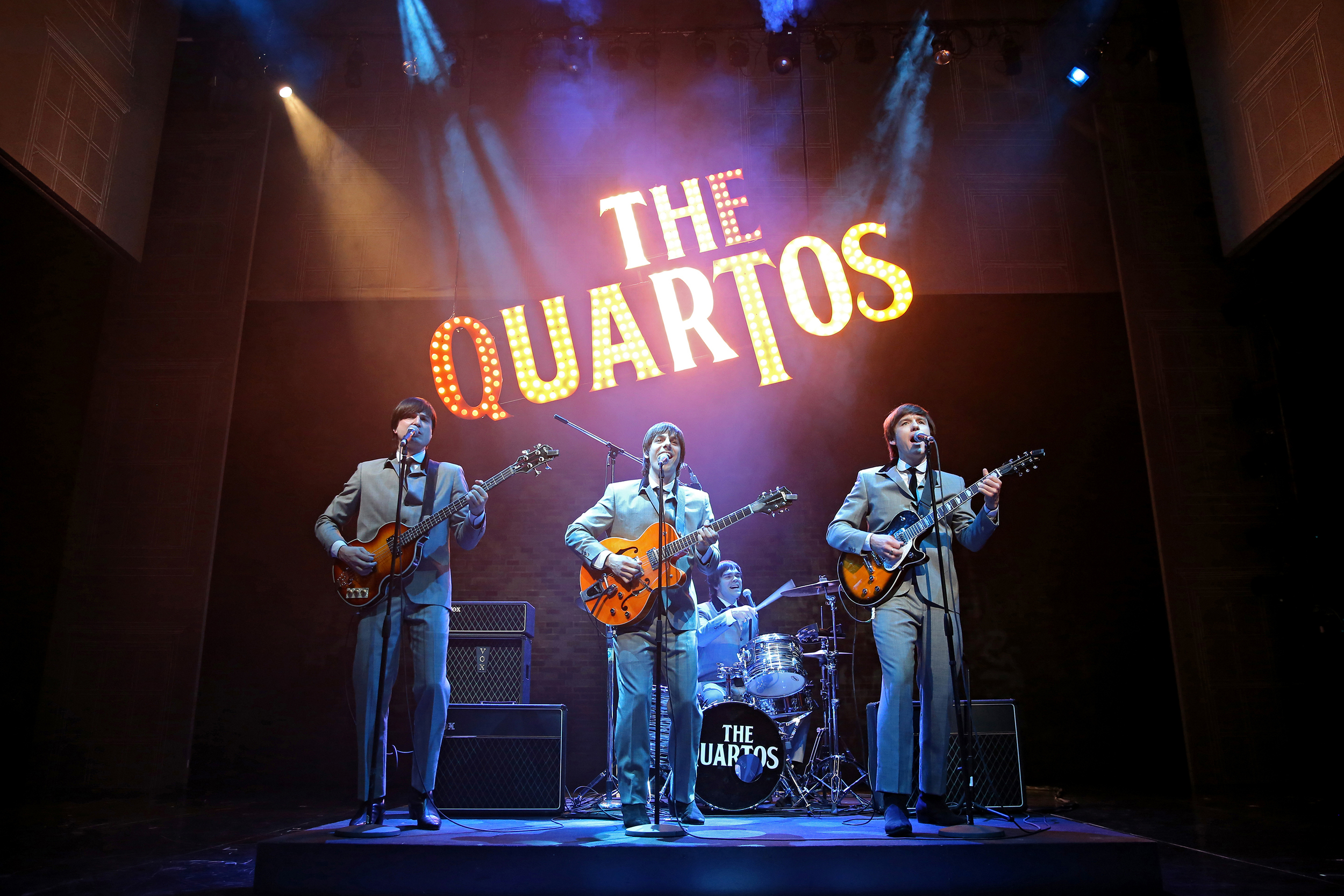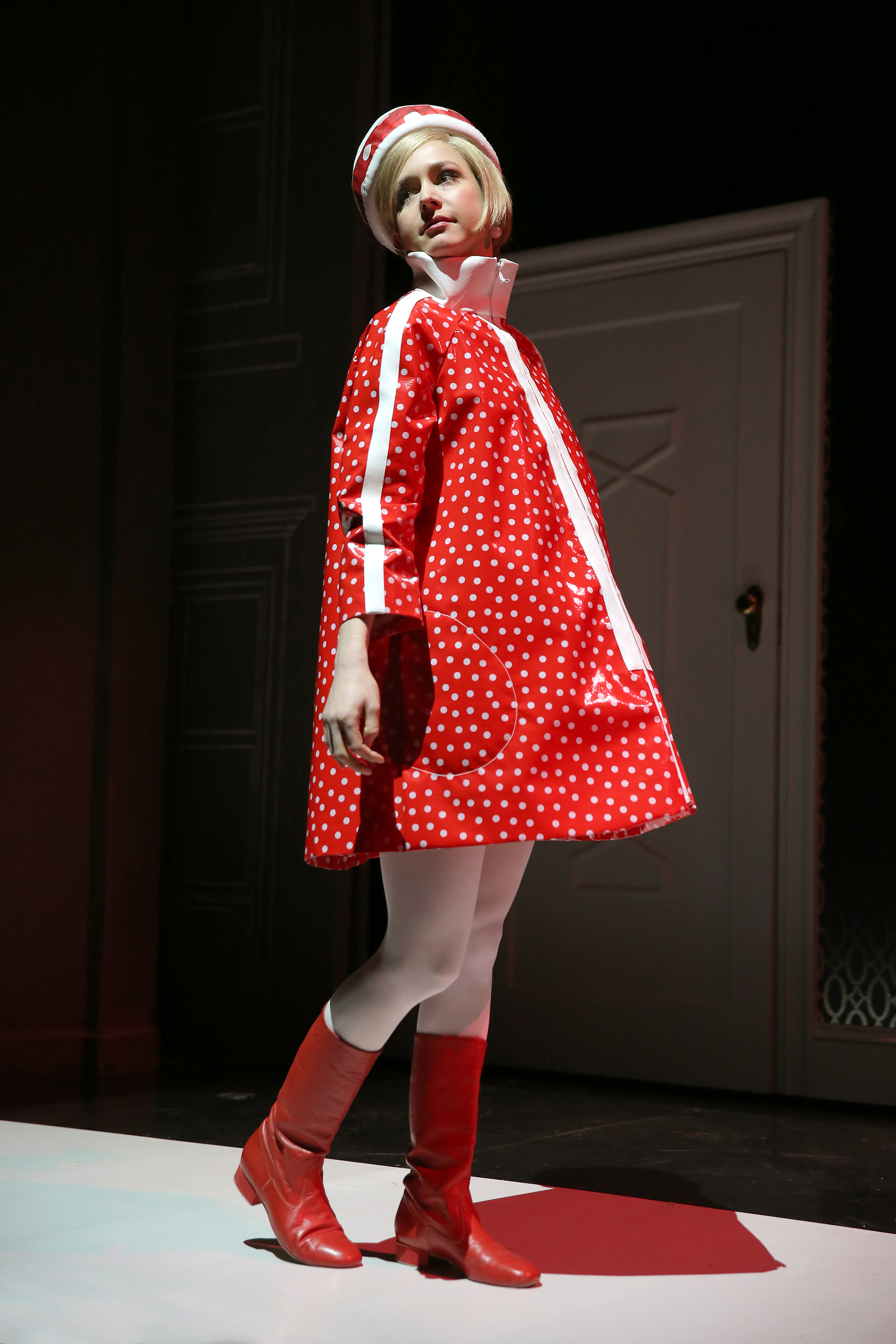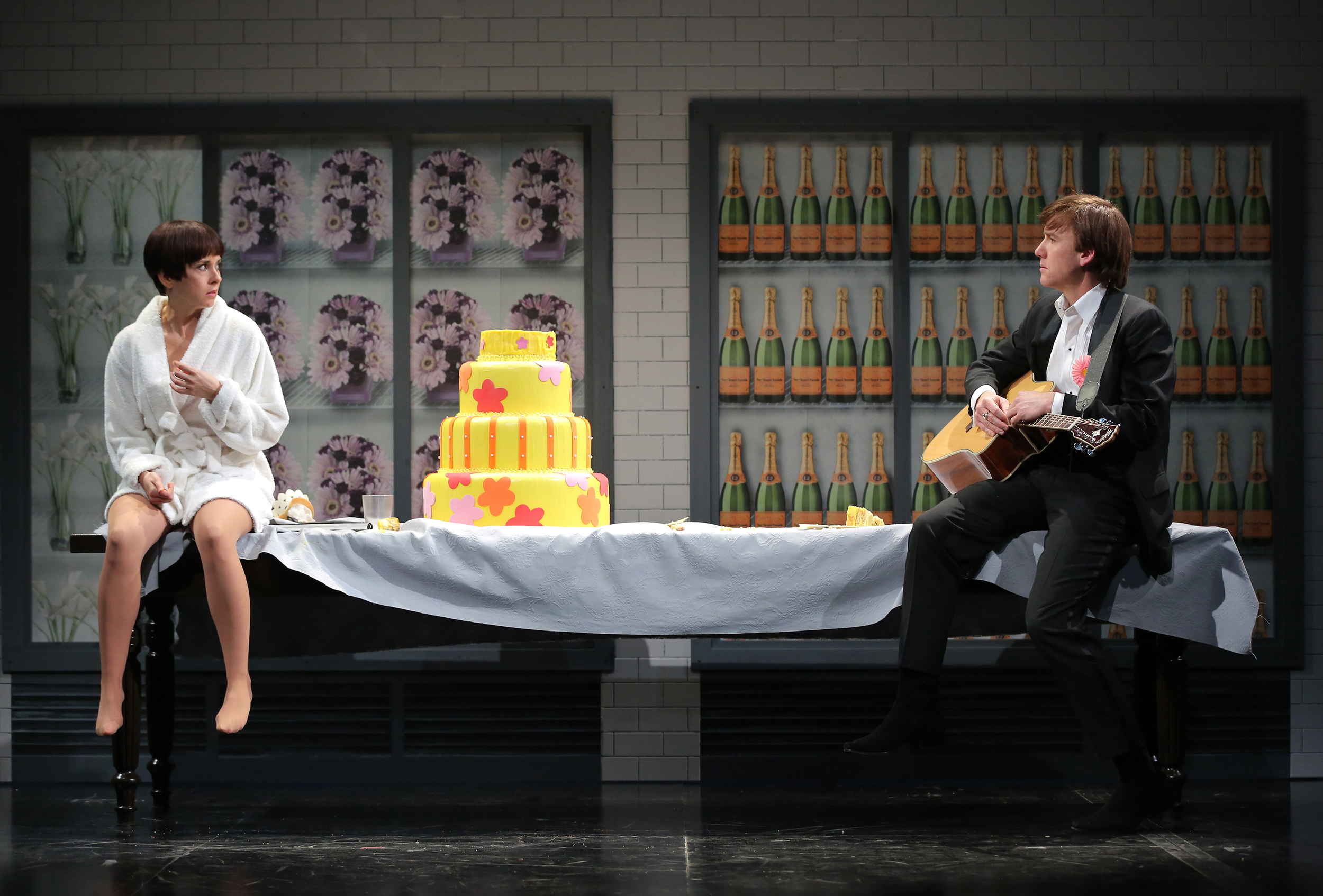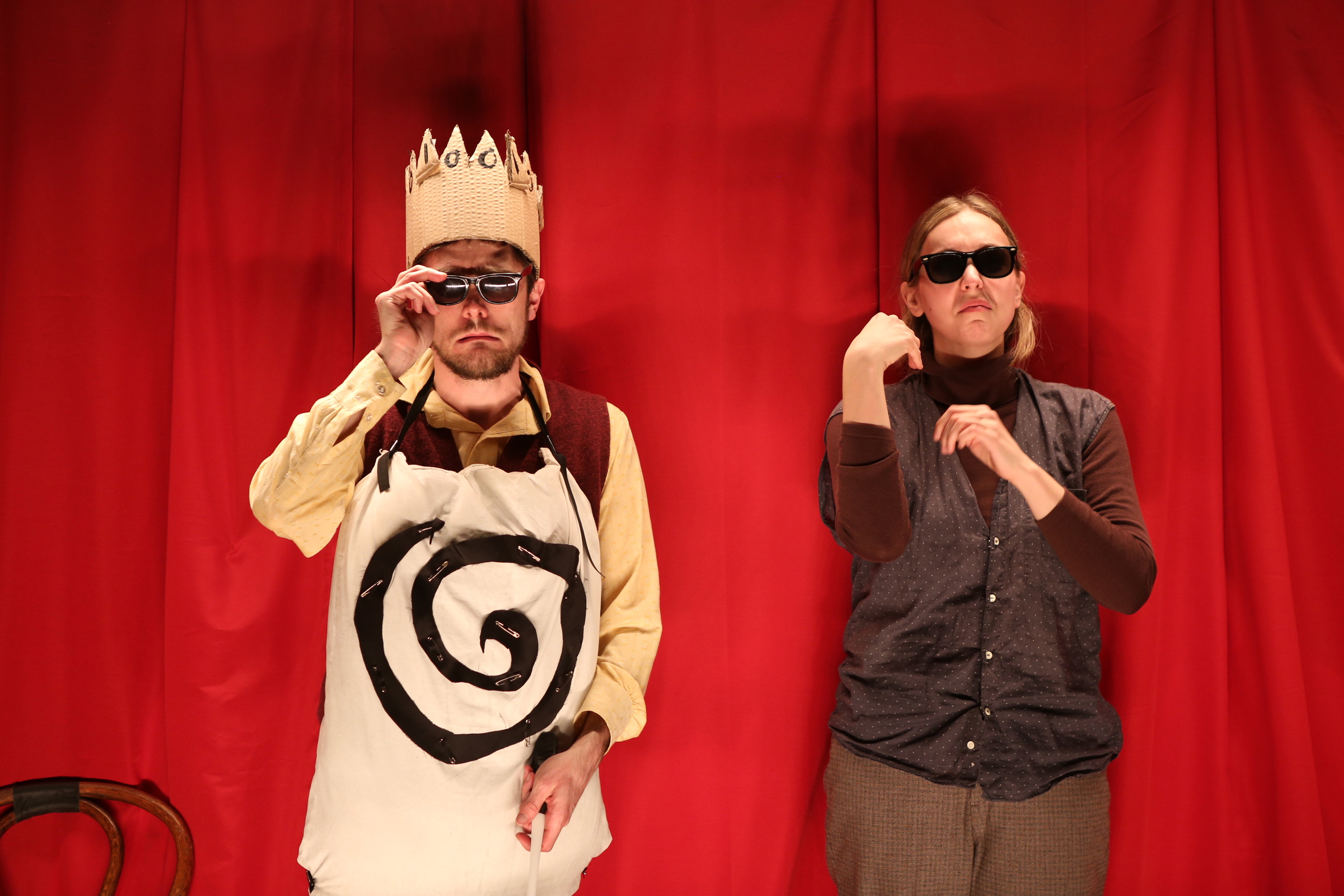Review of Traces Traces, the production by Les 7 Doigts de la Main at this year’s International Festival of Arts & Ideas, presents an varied mix of incredible circus tricks, busy choreography and musical interludes, blending rougher street effects with elements that are more lighthearted. The troupe’s stated intention of incorporating harsher themes—as evidenced by the title’s reference to what we leave after we die or after our very civilization is gone—could be seen in bits like the drawing of chalk outlines around fallen bodies, a voice-over invoking fall-out from nuclear attack, and theatrics that seemed to involve edgier interactions such as playful punches, rough-housing, and taking aim at one another, together with inscriptions about memory.
The upshot of the show is that the kind of acrobatic theater the group specializes in can be adapted to different moods and occasions. Against the sense of fatality in the world at large, the troupe offers a banded-together sense of purpose, even as the show made considerable efforts to differentiate the players. Introduced by speaking individually into a hanging mike—like the kind familiar from the boxing ring—the members of the cast were also presented by typed fact sheets that, as projections, gave us the vital statistics of each member fleshed out by three adjectives to describe personality or attitude. There’s even a moment at the end where each member presents themselves as if contestants of a reality show, beseeching votes from the audience. The combined effect is to convince us of the reality of the “characters”—which is to say the presented personalities of the cast: Lucas Boutin, Mathieu Cloutier, Hou Kai, LJ Maries, Fletcher Sanchez, Renaldo Williams, Naomie Zimmerman-Pichon.
As contributors to the overall effect, each also has their specialty, though in the fast paced action it can be difficult to keep track of who does what. There is a blend of exhilarating, gravity-defying stunts in climbing poles and leaping between poles, with interludes such as a song Cloutier plays on guitar, and each member takes turns at a rough-hewn piano, treating it as a means to compete further. Some of the more lyrical aspects of the show fall to its only female member—her ballet-like movements suspended in space was a high point of tension and grace, and her solo turn with a settee and book—you’ve never seen anyone treat furniture that way though every child perhaps tries—is fun; she also engages in a charming pas de deux with Renaldo Williams early in the show. Other memorable escapades include the entire company working out a delightful routine with skateboards to a jazzy arrangements of “Paper Moon,”a stunning ride on a spinning hoop, or cyr wheel, intricate work on aerial straps, wild vaults from a teeterboard, and, my favorite segment, the endlessly satisfying and inventive leaps through rings in varied configurations and postures.
The troupe may feel that their kind of theater should be able to make more of a point, but to hear the gasps of delight of the audience and the glee of many of the children present is to see the point of such theater. The purpose of 7 Doigts de la Main is to inspire us with defiance of gravity, with amazing feats that most humans can only dream of doing, and to let us exult in what seems effortless precision, strength, agility and camaraderie.
International Festival of Arts & Ideas presents
Traces Les 7 Doigts de la Main
Direction and choreography: Shana Carroll, Gypsy Snider; Assistant to the Artistic Director: Francisco Cruz; on stage: Lucas Boutin, Mathieu Cloutier, Hou Kai, LJ Maries, Fletcher Sanchez, Renaldo Williams, Naomie Zimmeran-Pichon; Touring Team: Tour Manager: Anna Cassel; Sound: Sébastien Marion; Lights: Olivier Rosa; Rigger: Stéphane Beauchet; Artistic Crew: Lights: Nol van Genuchten; Costumes: Manon Desmarais; Set & Porps Original Design: Flavia Hevia; Set & Props Adaptation, Music & Soundscape: Les 7 doigts de la main; Video: Paul Ahad; André Biron; Les 7 doigts de la main; Props Adaptation: Bruno Tassé; Head Coaches: Jérôme Le Baut and Francisco Cruz; Coach for Sofa and Aerial Strap Acts: Isabelle Chassé; Cyr Wheel Coach: Krin Haglund; Piano Coach: Sophie Houle et Francisco Cruz; Stage Manager: Patrick Loubert; Musics for Hand to Hand and Aerial Acts: Seth Stachowski
University Theatre, York Street June 24-27, 8pm; June 28, 1pm & 5pm


